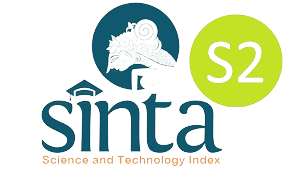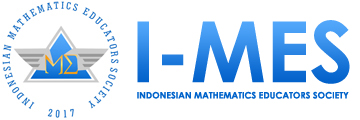Textbook analysis of integers content using the praxeology framework
DOI:
https://doi.org/10.29408/jel.v11i3.29859Keywords:
integer, praxeology, textbook analysisAbstract
Textbooks play a crucial role in the learning process, influencing instructional practices and students' cognitive development. However, some textbooks fail to support students in constructing new knowledge because of a lack of gradual concept progression. Consequently, textbook analysis has become a key focus of educational research. This study analysed a seventh-grade mathematics textbook on integers using the praxeology framework. It examines the material structure and identifies potential learning obstacles to learning. As part of Didactical Design Research (DDR) at the prospective stage, this study adopts an interpretive paradigm and qualitative approach. The praxeology framework, derived from the Anthropological Theory of the Didactic (ATD), serves as an analytical lens for this study. The researchers conducted an in-depth analysis of praxeological components, including task types, techniques, technologies, and the underlying theories. The findings revealed that the textbook systematically presented integer content but lacked support for epistemic knowledge construction. Additionally, potential didactic and ontogenic obstacles were identified. The findings contribute theoretically by demonstrating the framework’s application to textbook analysis. Practically, it guides the alignment of mathematical tasks with learning goals and reduces the learning obstacles. The results inform policy by emphasising the development of contextually and pedagogically relevant textbooks, rather than direct adaptation.
References
Al-Salahat, M. M. S. (2022). The effect of using concrete-representational-abstract sequence in teaching the perimeter of geometric shapes for students with learning disabilities. International Journal of Education in Mathematics, Science and Technology, 10(2), 477–493. https://doi.org/10.46328/ijemst.2403
Brousseau, G. (1997). Theory of didactical situations in mathematics. Kluwer Academic Publishers.
Carson, J. (2007). A problem with problem solving: teaching thinking without teaching knowledge. The Mathematics Educator, 17(2), 7–14.
Chevallard, Y. (2007). Readjusting didactics to a changing epistemology. European Educational Research Journal, 6(2), 131–134. https://doi.org/10.2304/eerj.2007.6.2.131
Chevallard, Y. (2006). Steps towards a new epistemology in mathematics education. Proceedings of the IV Congress of the European Society for Research in Mathematics Education, 21–30.
Choppin, J., Roth McDuffie, A., Drake, C., & Davis, J. (2022). The role of instructional materials in the relationship between the official curriculum and the enacted curriculum. Mathematical Thinking and Learning, 24(2), 123–148. https://doi.org/10.1080/10986065.2020.1855376
Dong, A., Jong, M. S.-Y., & King, R. B. (2020). How does prior knowledge influence learning engagement? the mediating roles of cognitive load and help-seeking. Frontiers in Psychology, 11, 1–10. https://doi.org/10.3389/fpsyg.2020.591203
Fan, L., Cheng, J., Xie, S., Luo, J., Wang, Y., & Sun, Y. (2021). Are textbooks facilitators or barriers for teachers’ teaching and instructional change? An investigation of secondary mathematics teachers in Shanghai, China. ZDM – Mathematics Education, 53(6), 1313–1330. https://doi.org/10.1007/s11858-021-01306-6
Fan, L., Zhu, Y., & Miao, Z. (2013). Textbook research in mathematics education: development status and directions. ZDM-Mathematics Education, 45(5), 633–646. https://doi.org/10.1007/s11858-013-0539-x
Hendriyanto, A., Suryadi, D., Dahlan, J. A., & Juandi, D. (2023). Praxeology review: comparing Singaporean and Indonesian textbooks in introducing the concept of sets. Eurasia Journal of Mathematics, Science and Technology Education, 19(2), 1–13. https://doi.org/10.29333/ejmste/12953
Huang, R., Tlili, A., Zhang, X., Sun, T., Wang, J., Sharma, R. C., Affouneh, S., Salha, S., Altinay, F., Altinay, Z., Olivier, J., Jemni, M., Wang, Y., Zhao, J., & Burgos, D. (2022). A comprehensive framework for comparing textbooks: insights from the literature and experts. Sustainability, 14(6940), 1–19. https://doi.org/10.3390/su14116940
Jäder, J., Lithner, J., & Sidenvall, J. (2020). Mathematical problem solving in textbooks from twelve countries. International Journal of Mathematical Education in Science and Technology, 51(7), 1120–1136. https://doi.org/10.1080/0020739X.2019.1656826
Jukić Matić, L., & Glasnović Gracin, D. (2016). The use of the textbook as an artefact in the classroom. Journal Für Mathematik-Didaktik, 37(2), 349–374. https://doi.org/10.1007/s13138-016-0091-7
Kilpatrick, J., Swafford, J., & Findell, B. (2001). Adding it up: helping children learn mathematics. National Academy Press. https://doi.org/10.17226/10434
Klang, N., Karlsson, N., Kilborn, W., Eriksson, P., & Karlberg, M. (2021). Mathematical problem-solving through cooperative learning—the importance of peer acceptance and friendships. Frontiers in Education, 6, 1–10. https://doi.org/10.3389/feduc.2021.710296
Kuncoro, K. S., Suryadi, D., Dahlan, J. A., & Jupri, A. (2024). Praxeological analysis in Indonesian and Singaporean mathematics textbooks: an understanding geometrical similarity by students. Journal on Mathematics Education, 15(4), 1197–1218. https://doi.org/10.22342/jme.v15i4.pp1197-1218
Kusharyadi, R., Fatimah, S., & Kusnandi, K. (2024). A praxeological review of concept-sequence and series: comparing Malaysia and Indonesia textbooks. Jurnal Elemen, 10(2), 239–259. https://doi.org/10.29408/jel.v10i2.24079
Lodge, J. M., Kennedy, G., Lockyer, L., Arguel, A., & Pachman, M. (2018). Understanding difficulties and resulting confusion in learning: an integrative review. Frontiers in Education, 3, 1–10. https://doi.org/10.3389/feduc.2018.00049
Lutfi, M. K., Juandi, D., & Jupri, A. (2021). Students’ ontogenic obstacle on the topic of triangle and quadrilateral. Journal of Physics: Conference Series, 1806(1), 012108. https://doi.org/10.1088/1742-6596/1806/1/012108
National Council of Teachers of Mathematics. (2000). Principles and standards for school mathematics. NCTM. https://Www.Nctm.Org/Standards-and-Positions/Principles-and-Standards/. https://www.nctm.org/Standards-and-Positions/Principles-and-Standards/
Nomvuyo M, T., David Sekao, R., & Ogbonnaya I, U. (2023). Mathematics teachers use of textbooks for instructional decision-making in lesson study. Journal of Pedagogical Research, 7(4), 1–13. https://doi.org/10.33902/JPR.202320138
Özgeldi, M., & Esen, Y. (2010). Analysis of mathematical tasks in Turkish elementary school mathematics textbooks. Procedia - Social and Behavioral Sciences, 2(2), 2277–2281. https://doi.org/10.1016/j.sbspro.2010.03.322
Pierard, C., Svihla, V., Clement, S. K., & Fazio, B. S. (2020). Undesirable difficulties: Investigating barriers students’ learning with ebooks in a semester-length course. College and Research Libraries, 81(2), 170–192. https://doi.org/10.5860/crl.81.2.170
Remillard, J. T. (2000). Can curriculum materials support teachers’ learning? two fourth-grade teachers’ use of a new mathematics text. The Elementary School Journal, 100(4), 331–350. https://doi.org/10.1086/499645
Resnick, I., Newcombe, N., & Goldwater, M. (2023). Reasoning about fraction and decimal magnitudes, reasoning proportionally, and mathematics achievement in Australia and the United States. Journal of Numerical Cognition, 9(1), 222–239. https://doi.org/10.5964/jnc.8249
Rezat, S. (2012). Interactions of teachers’ and students’ use of mathematics textbooks (G. Gueudet, B. Pepin, & L. Trouche (eds.); pp. 231–245). Springer Netherlands. https://doi.org/10.1007/978-94-007-1966-8_12
Rezat, S., Fan, L., & Pepin, B. (2021). Mathematics textbooks and curriculum resources as instruments for change. ZDM – Mathematics Education, 53(6), 1189–1206. https://doi.org/10.1007/s11858-021-01309-3
Rzyankina, E., George, F., & Simpson, Z. (2024). Enhancing conceptual understanding in engineering mathematics through e-textbooks. IEEE Transactions on Education, 67(4), 534–541. https://doi.org/10.1109/TE.2024.3387102
Shepherd, M. D., Selden, A., & Selden, J. (2009). Difficulties first-year university students have in reading their mathematics textbook. Tennessee Technological University, Technical Report, 1–45.
Sinaga, B., Sitorus, J., & Situmeang, T. (2023). The influence of students’ problem-solving understanding and results of students’ mathematics learning. Frontiers in Education, 8. https://doi.org/10.3389/feduc.2023.1088556
Suryadi, D. (2023). Jalan epistemik menghasilkan penegtahuan melalui didactical design research (DDR) [The epistemic trajectory of knowledge production through didactical design research (DDR)].
Suryadi, D., Itoh, T., & Isnarto. (2023). A prospective mathematics teacher’s lesson planning: An in-depth analysis from the anthropological theory of the didactic. Journal on Mathematics Education, 14(4), 723–739. https://doi.org/10.22342/jme.v14i4.pp723-740
Utami, N. S., Mizoguchi, T., Prabawanto, S., & Suryadi, D. (2025). A praxeological analysis of functions in lower secondary school: comparing the textbooks in Japan and Indonesia. International Electronic Journal of Mathematics Education, 20(2), em0814. https://doi.org/10.29333/iejme/15818
Utami, N. S., Prabawanto, S., & Suryadi, D. (2024). How do Indonesian students learn function concepts? A praxeological analysis of textbook. Journal on Mathematics Education, 15(2), 451–472. https://doi.org/10.22342/jme.v15i2.pp451-472
Wang, S., Winsløw, C., & Xu, B. (2024). Mathematical praxeologies in the Chinese and Singaporean secondary school textbooks : the case of probability. Proceedings of the Thirteenth Congress of the European Society for Research in Mathematics Education (CERME13), 4221–4228.
Wang, X. (2024). Methodological approaches in exploring textbook structures. https://www.proquest.com/docview/3092180055
Wijayanti, D., & Winslow, C. (2017). Mathematical practice in textbooks analysis: praxeological reference models, the case of proportion. Journal of Research in Mathematics Education, 6(3), 307–330. https://doi.org/10.17583/redimat.2017.2078
Yunianta, T. N. H., Suryadi, D., Dasari, D., & Herman, T. (2023). Textbook praxeological-didactical analysis: lessons learned from the Indonesian mathematics textbook. Journal on Mathematics Education, 14(3 SE-Articles), 503–524. https://doi.org/10.22342/jme.v14i3.pp503-524
Zhang, S., Yu, S., Xiao, J., Liu, Y., & Jiang, T. (2022). The effects of concrete-representational-abstract sequence instruction on fractions for Chinese elementary students with mathematics learning disabilities. International Journal of Science and Mathematics Education, 20(7), 1481–1498. https://doi.org/10.1007/s10763-021-10215-9
Zhao, L., Zhao, B., & Li, C. (2023). Alignment analysis of teaching–learning-assessment within the classroom: how teachers implement project-based learning under the curriculum standards. Disciplinary and Interdisciplinary Science Education Research, 5(1), 13. https://doi.org/10.1186/s43031-023-00078-1
Downloads
Published
How to Cite
Issue
Section
License
Copyright (c) 2025 Putri Fitriasari, Suhendra, Didi Suryadi, Elah Nurlaelah

This work is licensed under a Creative Commons Attribution-ShareAlike 4.0 International License.
Authors who publish with the Jurnal Elemen agree to the following terms:
- Authors retain copyright and grant the journal right of first publication with the work simultaneously licensed under Creative Commons Attribution-ShareAlike 4.0 International License (CC BY-SA 4.0).
- Authors are able to enter into separate, additional contractual arrangements for the distribution of the journal's published version of the work (e.g., post it to an institutional repository or publish it in a book), with an acknowledgment of its initial publication in this journal.
- Authors are permitted and encouraged to post their work online (e.g., in institutional repositories or on their website) prior to and during the submission process, as it can lead to productive exchanges, as well as earlier and greater citation of published work.
Jurnal Elemen is licensed under a Creative Commons Attribution-ShareAlike 4.0 International License





